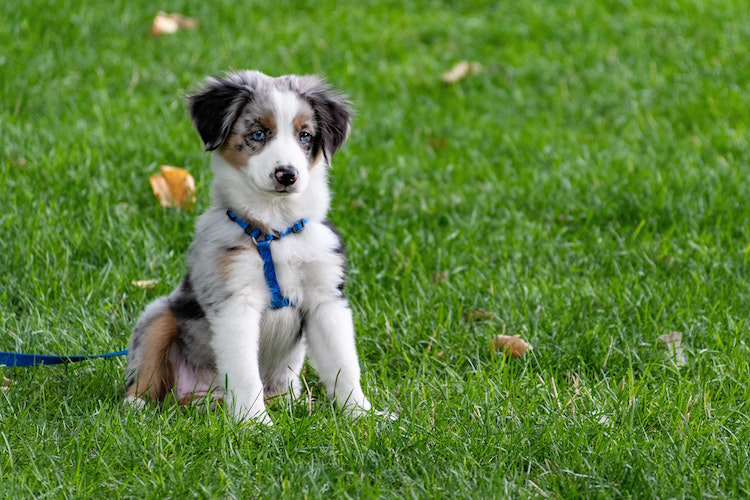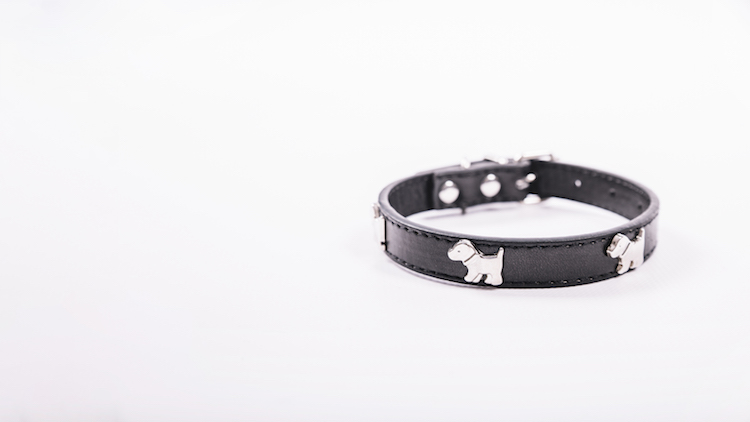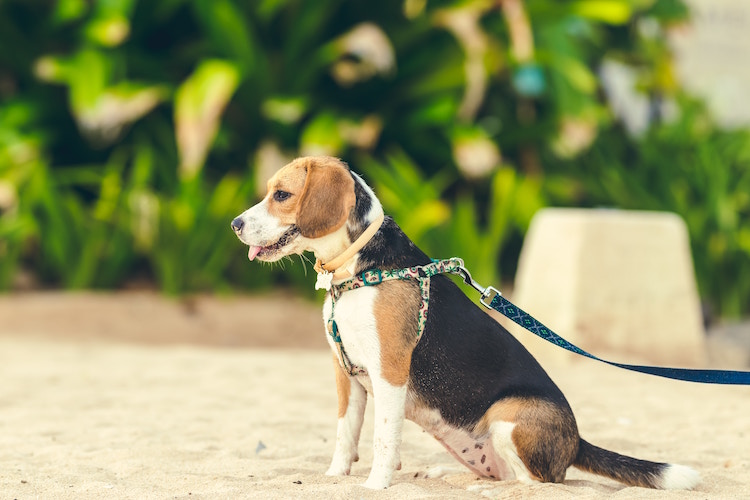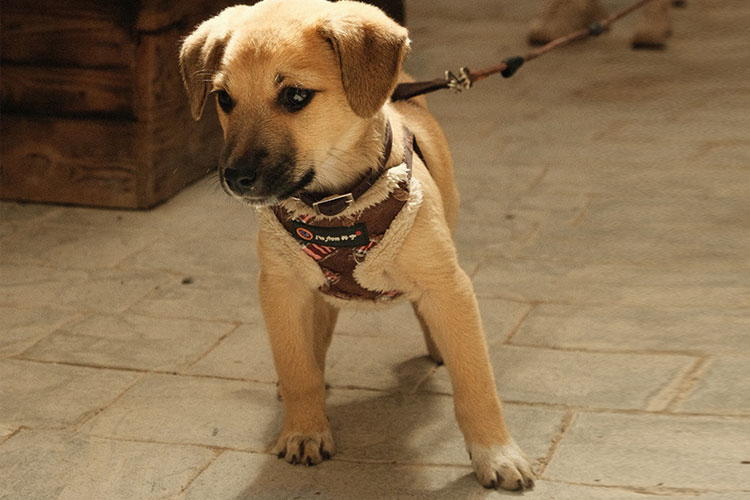How to Leash Train a Puppy?

Image credit: Pexels.com
Many new puppy owners often believe their puppies are untrainable, but this is far from the truth. Puppies are naturally energetic and easily distracted, making it challenging for them to learn commands quickly. It’s easy for owners to become discouraged during the training process. However, it’s important to remember that with a strong connection and gentle guidance, even the most mischievous of puppies can be successfully trained.
In moments of frustration, some owners may resort to forceful methods to leash train their puppies. However, it is highly discouraged to employ choke chains or prong collars to enforce obedience. Training is a process that involves building a bond and establishing trust with your puppy. The goal is for your puppy to enjoy training sessions and feel rewarded for their efforts. If you resort to punishment or causing discomfort to teach them, they are likely to develop a negative association with training and may try to avoid it altogether. Moreover, such methods can lead to fear or dislike towards their owners, which can result in additional behavioural issues.
Why Leash Train Your Puppy?

Image credit: Pexels.com
Similar to young children, puppies possess an insatiable curiosity and a desire for adventure, which makes walks an absolute joy for them. However, if your puppy constantly pulls on the leash and tries to escape, walks can quickly become a tiresome struggle for both you and your puppy. Training your puppy to be comfortable on the leash and avoid pulling can transform these outings into pleasant experiences that allow both of you to explore the neighbourhood together.
The ability to take walks with your puppy holds tremendous importance for their holistic development. It contributes to their physical well-being, promoting strength, and ensuring overall health, while also serving as an outlet for their abundant energy. Moreover, it plays a vital role in their mental growth, as they encounter new environments and experiences. Walking and leash training also familiarise your puppy with following commands and the overall training process, establishing a foundation that will be invaluable when teaching them additional tricks in the future.
Furthermore, leashes are typically required in public areas, making puppy leash training an essential skill if you wish to bring your puppy to parks or take them along on outings to town.
How to Leash Train a Puppy

Image credit: Freepik.com
To begin the process of puppy leash training, it is important to gather the necessary supplies. Here’s what you’ll need:
- Collar or Harness

Image credit: Freepik.com
Ensure your puppy has a properly fitting collar or harness. A collar that is too tight will cause discomfort, while one that is too loose may enable your pup to escape or wear too high on their neck. Remember the rule of thumb: you should be able to fit two fingers between the collar and your puppy’s neck when they are wearing it.
- Leash

Image credit: Unsplash.com
Select a leash size appropriate for your puppy’s height. It’s important to provide enough slack so that your dog can move comfortably within a safe distance. The goal is to train your puppy to never pull the leash tight. Also, ensure that the leash hooks securely to the collar or harness.
- Treats

Image credit: Freepik.com
Have a supply of treats that your puppy finds highly rewarding. These treats will serve as positive reinforcement during the training process.
Puppy Leash Training in 6 Simple Steps
Step 1: Introduce the Collar and Leash
Before starting puppy leash training, it’s important to get your puppy comfortable with wearing a collar regularly. Some dogs may be more sensitive, so try different leashes to find one that your puppy doesn’t mind. Once your puppy is comfortable in the collar, gradually introduce the leash by associating it with positive experiences, such as playtime or receiving a toy.
Step 2: Start in the Backyard
Begin the training process by taking a few laps around the backyard. This controlled environment helps your puppy get used to the feeling of being on a leash without the distractions of a busy street.
Step 3: Go for Your First Leashed Walk
Once your puppy is comfortable walking with the leash in the backyard, it’s time to venture out for your first leashed walk. This step requires your focused attention, as your puppy will be easily distracted by the outdoor environment. Use gentle guidance to redirect your puppy’s attention away from distractions and maintain a steady pace.
Step 4: Reward Good Behaviour
Positive reinforcement is key to teaching your puppy desired behaviours. Utilise a mix of rewards, such as verbal praise, petting, attention, and treats, to reinforce behaviours you want to encourage. Varying the rewards and giving them randomly prevents your puppy from becoming reliant on specific expectations.
Step 5: Introduce Commands
If your puppy is responding well to puppy leash training, you can start introducing commands. Teaching commands like “heel” can make the training more challenging and stimulating for your dog. Practice by stopping and waiting for your puppy to return to your side whenever they get ahead of you. Associate the word “heel” with the action and reward him when he responds correctly.
Step 6: Exercise Patience and Consistency
Remember that learning and adapting to training takes time and patience. Remain consistent with your training efforts and understanding of your puppy’s behaviour. By establishing a routine and maintaining a positive attitude, you will witness your puppy’s progress and their ability to learn new skills.
Bonus Tip: Keeping Your Puppy’s Attention
Maintaining your puppy’s focus during training can be challenging due to their natural curiosity. To keep them engaged, use special treats exclusively for training sessions. These high-value rewards capture their attention and provide a stronger incentive. Socialising your puppy with other puppies helps them become more accustomed to their presence, making outdoor encounters less distracting.
Conclusion
Puppy leash training not only ensures enjoyable and safe walks for both you and your puppy but also promotes their physical and mental well-being. Remember to focus on building a strong bond with your puppy through trust, understanding, and rewarding good behaviour.
Need to take your puppy for its training classes? JoJo Pets, a pet taxi service in Malaysia is providing safe and timely pet transportation. Our trained drivers will transport your pet (and you) safely and comfortably to any local destination you have in mind.
Let us know if you have any questions. Book a ride with us today!
JoJo Pets also offers cashless payment with their JoJo Wallet, including all major e-wallets, credit/debit card as well as online banking.
Download the JoJo Pets app today for exclusive news and offers at https://jojo-pets.com/
